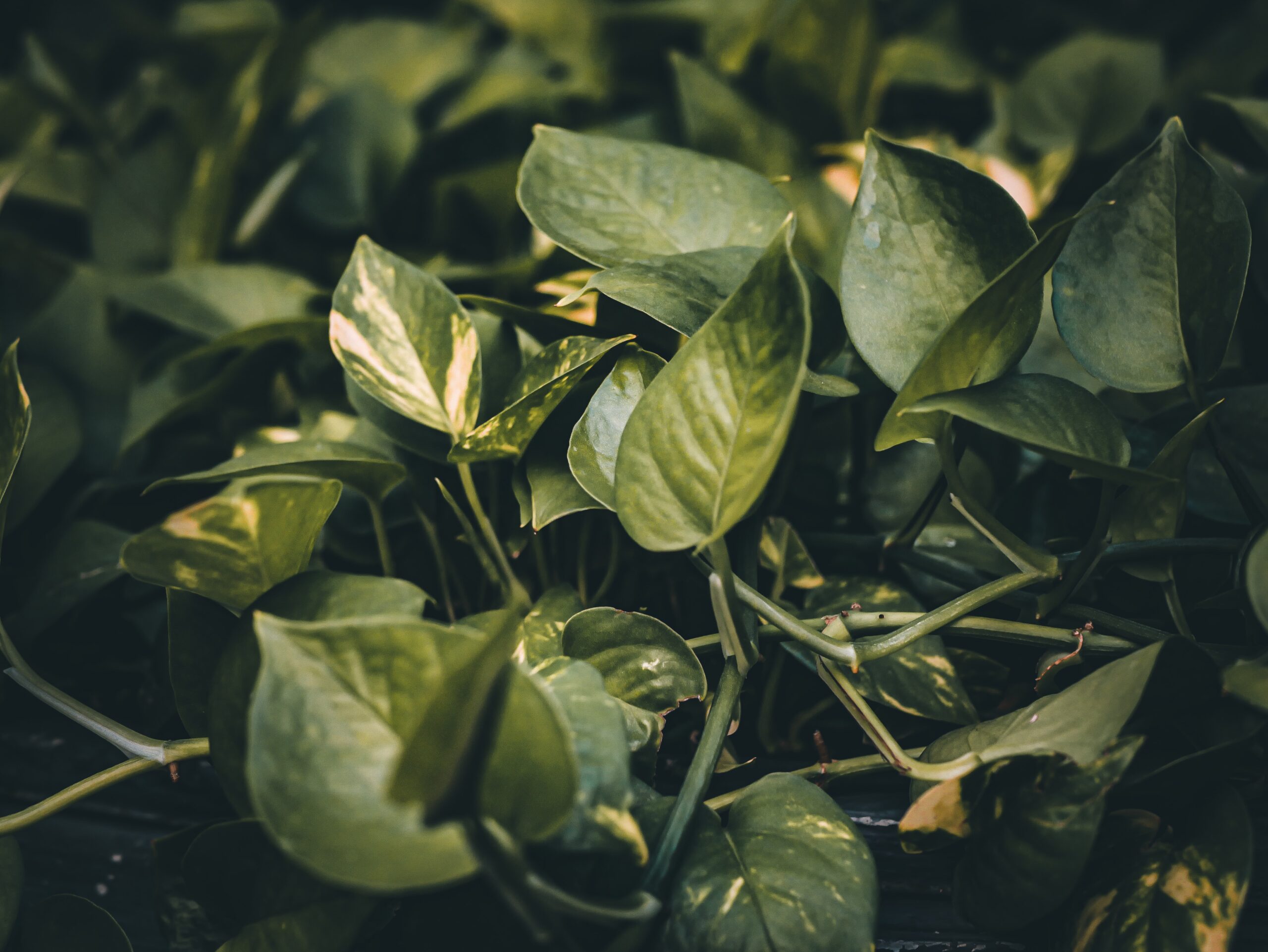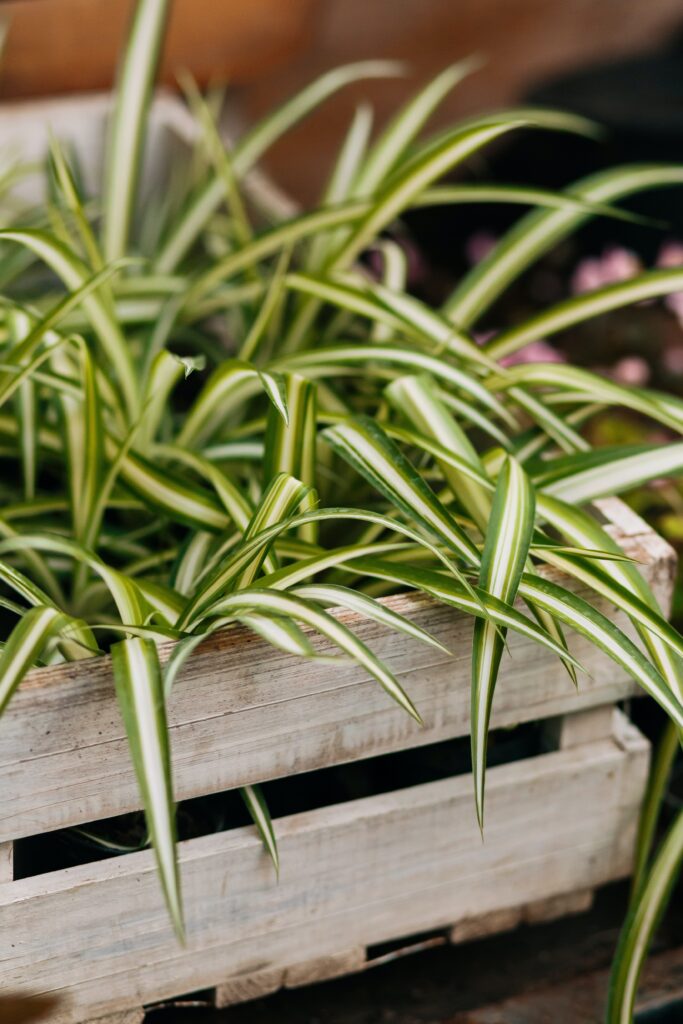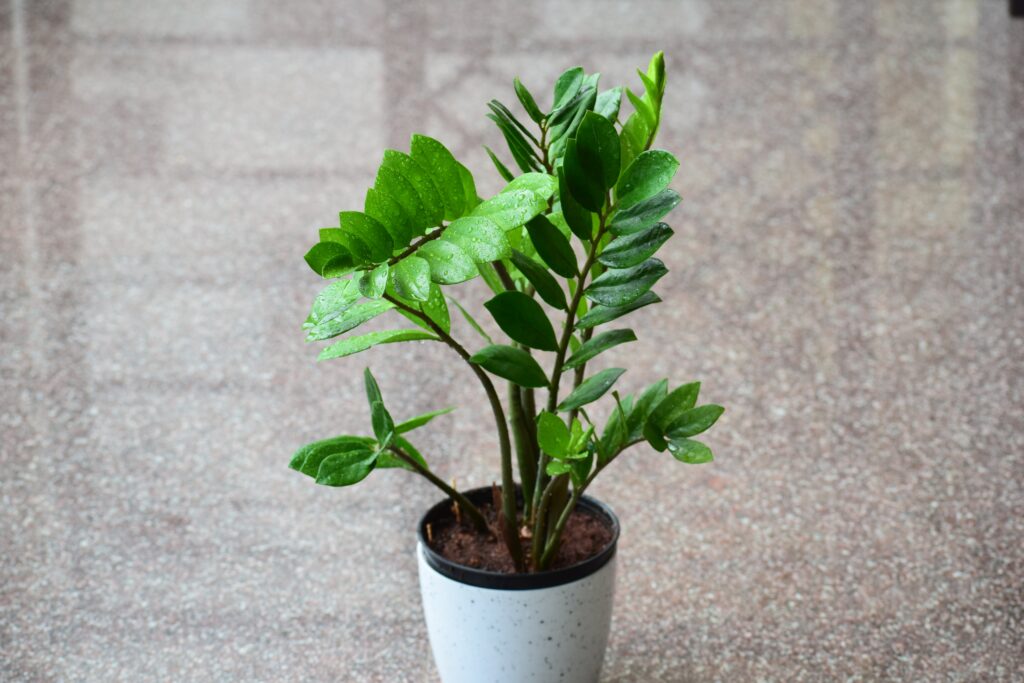House plants are a great way to bring life and color into your home, and they also have a host of health benefits. However, with so many different types of house plants out there, it can be overwhelming to know which ones to choose and how to care for them. In this post, we’ll explore the 7 best types of low maintenance house plants and give a basic description of how to care for each one. My personal favourite is number 7 due to its practical uses as well as being easy to care for!
Which Low Maintenance Indoor Plants are Best for My Home?
1. Snake Plant

The snake plant is a low-maintenance plant that is perfect for beginners. It has tall, pointed leaves that are green with yellow edges. It prefers bright, indirect light and only needs to be watered every 2-3 weeks.
2. Pothos

Pothos is a great indoor plant for beginners. It is also known as “Devil’s Ivy” and is perfect for hanging baskets or training to climb a trellis or moss pole. This plant prefers bright, indirect light but can also tolerate low light. Allow the soil to dry out so that it is dry to the touch between waterings and avoid overwatering. Pothos can also help purify the air by removing pollutants like formaldehyde, benzene, and xylene.
3. Spider Plant

The spider plant has long, narrow leaves that are green with white stripes. It is a very adaptable plant and can tolerate a wide range of light conditions, but prefers a bright spot out of direct sunlight. It should be watered when the soil feels dry to the touch, and misted with a spray bottle every once in a while.
4. Bird’s Nest Fern
The Bird’s Nest Fern is a tropical plant that is known for its wavy, bright green leaves that resemble a bird’s nest. This plant prefers indirect light and consistently moist soil, so be sure not to let it dry out completely. It also benefits from occasional misting or placing a tray of water nearby to increase humidity levels. The Bird’s Nest Fern is a great choice for bathrooms or other rooms with higher humidity levels, as well as for those who want to add a unique and eye-catching touch to their indoor plant collection.
5. Peace Lily

With its striking dark green leaves and beautiful white flowers, the Peace Lily is a great addition to any home. These plants are not only aesthetically pleasing, but they are also great for purifying the air in your home. They are known to remove toxins and pollutants, making them great for improving indoor air quality. Peace Lilies are also relatively easy to care for, requiring low to medium light and moist but not soggy soil. They should be watered once a week, and can be fertilised every two weeks during the growing season. Be sure to keep them away from pets, as they can be toxic if ingested.
6. Zanzibar Gem

Also known as the ZZ Plant, the Zanzibar Gem is a great low maintenance houseplant that can survive in low light and dry conditions. It only needs to be watered every 2-3 weeks and can be a great addition to any room.
7. Aloe Vera

Aloe is a popular and versatile low maintenance house plant. It is known for its gel-filled leaves that are commonly used for medicinal purposes due to their anti-inflammatory and healing properties. Aloe plants are easy to care for, as they do not require frequent watering and can thrive in various light conditions. They prefer bright, indirect light and can tolerate some direct sunlight, but too much sun exposure can damage their leaves. Aloe plants can also be useful in purifying the air in your home by removing harmful pollutants. Additionally, aloe plants are safe for pets and can help soothe skin irritation both for us and our furry friends!
Bonus Tip: How To Make Your Own Aloe Vera Gel
Making your own aloe vera gel at home is a straightforward process. First, cut a mature aloe vera leaf at the base, making sure to select a leaf that is thick and healthy. Next, let the leaf rest in an upright position for 10-15 minutes to allow the yellow sap to drain out. Afterward, use a sharp knife to cut off the thorny edges and slice the leaf open lengthwise. Then, use a spoon or a spatula to scrape the gel out of the leaf and into a blender. Blend the gel until smooth, and store it in a clean jar or container in the fridge for up to a week. Aloe vera gel can be used as a moisturiser for your skin, as a hair conditioner, and as a cooling agent for sunburns and minor skin irritations.
Pro tip: all of the above will benefit from a light mist now and again, and more importantly being dusted down every once in a while with a dust cloth. Remember to not use any other chemicals on them, so it might be best to keep a separate cloth that’s used specifically without cleaning product.
Are These Low Maintenance House Plants Bad for Allergies?
While houseplants can help purify the air and provide a calming environment, some people may have allergic reactions to certain types of plants. Common allergens found in houseplants include pollen, mould, and dust. I personally suffer from quite bad hay fever bought on by tree pollen, and haven’t had any reactions to the above plants, all of which we have in our home. If do you have allergies, it’s best to research which plants may trigger your symptoms before purchasing.
Are House Plants Good for Pets?
Many houseplants are toxic to pets, so it’s important to research which plants are safe before bringing them into your home. Some pet-safe plants include spider plants, African violets, and Boston ferns. However, even non-toxic plants can cause stomach upset or vomiting if ingested by pets.
Do House Plants Purify the Air?
Yes, many houseplants can help purify the air by removing harmful pollutants and toxins. Some of the best air-purifying plants include those mentioned above.
Do Low Maintenance House Plants Have Any Other Benefits?
Yes! In addition to their aesthetic appeal, houseplants have numerous health benefits. They can help reduce stress and anxiety, improve air quality as discussed, boost productivity and creativity, and even reduce noise levels. We believe that humans are happier when surrounded by nature, which can be difficult especially when you live in a city or even suburb. By filling your house with house plants, it allows us to return to nature, and all the benefits that brings. Plus, taking care of plants can be a therapeutic hobby.
Bonus Plant: Mexican Fortune Tree

A Mexican Fortune Tree is another popular low maintenance houseplant with a braided trunk and shiny green leaves. To care for this plant, it’s important to provide it with bright, indirect light and to water it when the top inch of soil is dry to the touch. Overwatering can lead to root rot, so be sure not to let the plant sit in standing water. You can fertilise the plant every few months with a balanced, water-soluble fertiliser, but this is not mandatory. It’s also important to keep this plant away from drafts or sudden temperature changes. In addition, legend has it that with one of these in your home, money and fortune will not be far behind! Disclaimer: the picture above is in my living room, and I am yet to see any fortune!
What About Something Needing a Little More Care?
If you’re looking for something needing a little more care, why not consider a Bonsai Tree? Bonsai trees are more than just plants; they are living expressions of art and nature. These miniature trees, meticulously shaped and pruned over time, bring a unique sense of beauty and serenity to any home. Keeping bonsai trees in your home offers numerous benefits. Firstly, they serve as a beautiful and captivating centerpiece, adding a touch of elegance and natural charm to your living space. Secondly, bonsai cultivation can be a therapeutic and meditative activity, allowing you to connect with nature and find solace in the nurturing process. Lastly, bonsai trees can serve as a reminder of the importance of patience and mindfulness, as their slow growth requires careful attention and care. Embracing the art of bonsai in your home is not only visually rewarding but also offers a meaningful and enriching experience. There are so many different options however that it can be difficult to know where to start. Visit Agrotex Global for a comprehensive guide on different Bonsai varieties.
Summary
Adding house plants to your home is a great way to improve the air quality and overall ambiance. By choosing the right types of plants for your space and caring for them properly, you can enjoy the benefits of nature indoors. With a little effort, you can enjoy the beauty and benefits of house plants for years to come. We previously discussed adding house plants as a bonus idea in our 9 Budget Ways to Bring Parisian Interior Design to Your Home, why not make a start with some of those shown above? Do you have a favourite house plant that we’ve missed off the list? Let us know in the comments below!





